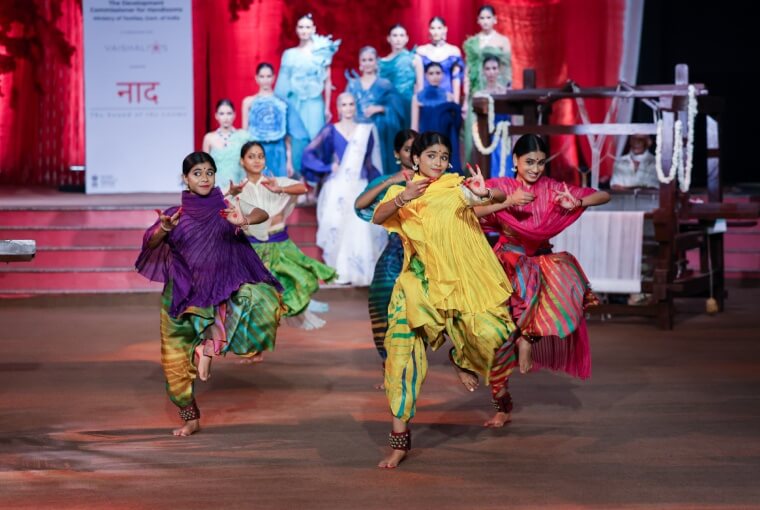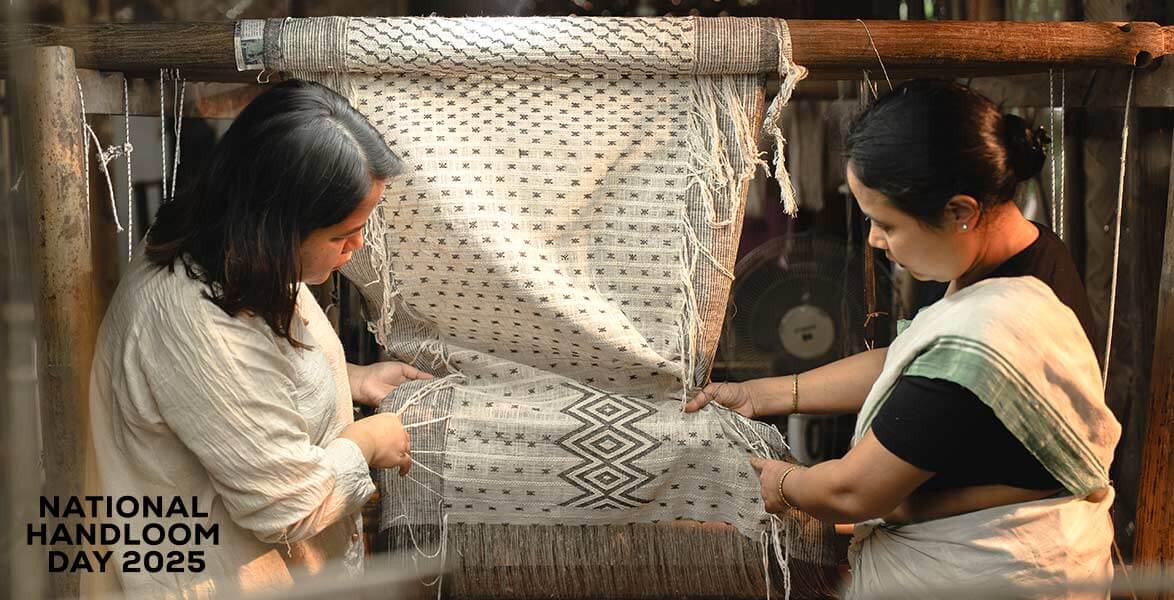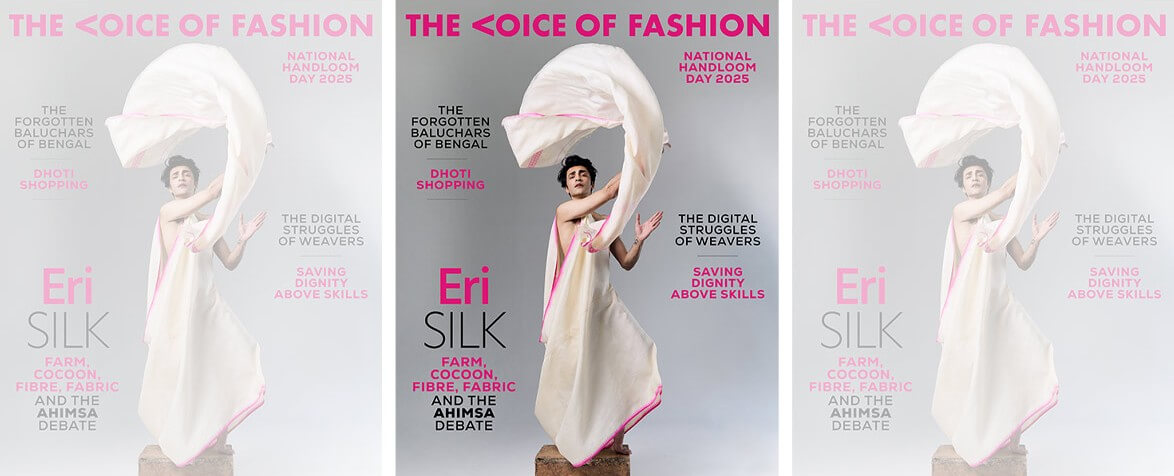Last week, Vaishali S’s couture retrospective on National Handloom Day showcased the breadth of her craft, but also the perils of overproduced presentations
Last week, Vaishali S — known for her distinctive cording techniques that reimagine Indian handlooms — marked National Handloom Day with Naad: The Sound of the Loom, a couture presentation at Delhi’s Ashok Hotel. Staged in collaboration with the Ministry of Textiles and the Development Commissioner of Handlooms, the show was a retrospective sweep of 52 looks drawn from an impressive range of weaves.
Saris, lehenga silhouettes, fitted gowns, draped skirts, and long dresses came alive in brocades, silks from different regions, Paithanis, handwoven Chanderis, and sheer textiles. The variety justified the retrospective label.

The most memorable sequence was the white capsule — its tonal simplicity outshining the other tableaux where some garments were enticing, but lacked the same collective power as white. The fond, if familiar, sound of looms in rhythm, in an aural presentation at the show’s opening, evoked a warm nostalgia. Long panels of woven textiles—spanning Vaishali’s work from West Bengal to Assam, Maharashtra to Karnataka and other clusters—hung like tapestries at the set. It gave the show area a kind of distinction, which is often missing when pretty perfect sets are made to showcase couture.
Vaishali’s design acumen speaks for itself. The show would have been stronger had it been edited for number.

Radhikaraje Gaekwad of Baroda, a genuine supporter of crafts and textiles, embodied the show’s spirit in a rose pink and gold Paithani sari draped as a nauvari—the Deccan-style nine-yards drape—paired with Vaishali’s corded blouse. Her poise turned the ensemble into an accessory. She was a special guest more than a regular showstopper and the fit between her and the designer worked elegantly. Yet, the decision to refer to her as Maharani in press materials was jarring, especially days before India’s 79th Independence Day—and particularly unsuited in a show backed by the government of India.

When Weavers Become Props
The struggles of the presentation came from the staging: handloom weavers seated at their looms as part of the set. In India, a loom is more than a tool—it is a sacred workspace. Using weavers as visual props risked reducing these knowledge workers to parts of the décor.
The production also suffered from over-layering. Elaborate staging, classical dance by students of Sadhguru Gurukulam Sanskriti School, props, and dense choreography. There were too many garments, most dominated by an Indianness in styling that was overwhelming. Couture is often forgiven for parts of it being unwearable—that is its nature. But here, some looks seemed weighed down by the draping styles. A few elements, like the dance, had individual merit—but together they crowded the presentation, stacking various Indian clichés rather than distilling its essence.

Vaishali’s design acumen speaks for itself. The show would have been stronger had it been edited for number and excess, allowing the textiles—and the stories they carry—to speak.





